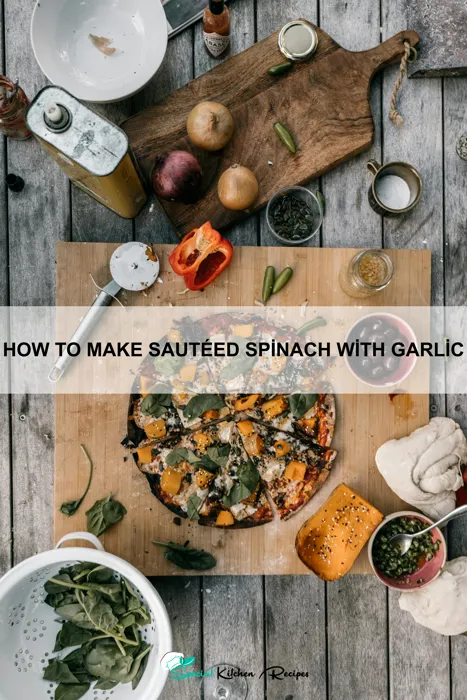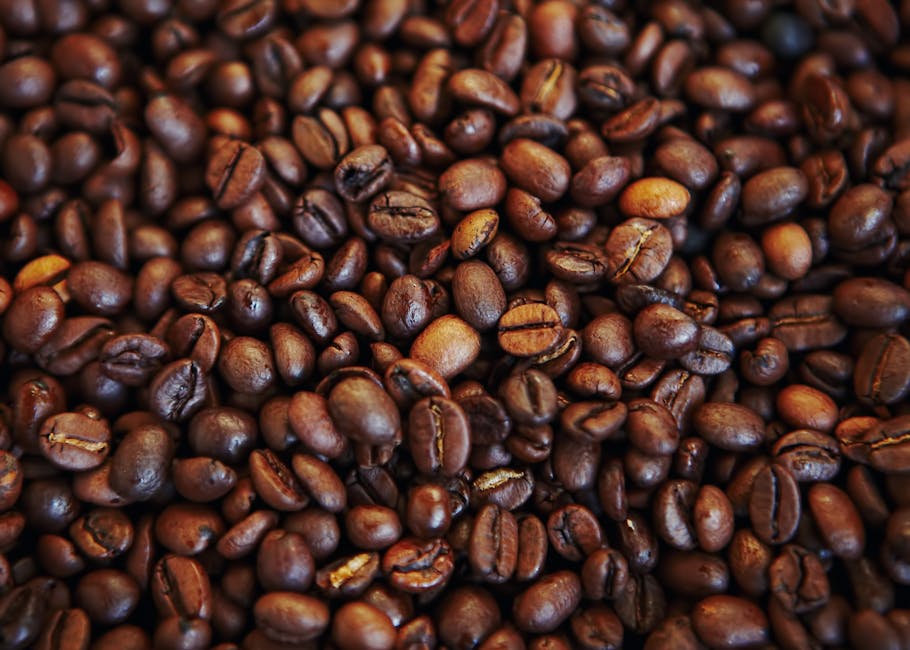Sautéed spinach with garlic, a seemingly simple dish, boasts a surprisingly rich history and global presence. While pinpointing its exact origin is difficult, the combination of spinach and garlic has been enjoyed in various forms across numerous cultures for centuries. Ancient Greeks and Romans cultivated spinach, though their preparations likely differed significantly from our modern sauté. The use of garlic, a staple in Mediterranean cuisine for millennia, adds a pungent and savory depth that elevates the spinach’s naturally earthy flavor. Its widespread adoption reflects the accessibility and versatility of both ingredients.
The popularity of spinach, in particular, has seen significant fluctuations throughout history. Popeye the Sailor Man’s association with the leafy green in the 1930s cartoons led to a notable surge in spinach consumption in the United States. While the cartoon exaggerated spinach’s nutritional benefits, the impact on its popularity was undeniable. Today, spinach remains a nutritional powerhouse, packed with vitamins A, C, and K, as well as iron and folate. Globally, spinach production is extensive, with China being the leading producer, accounting for approximately 30% of the world’s total output. This underscores the vegetable’s enduring appeal and its integration into diverse culinary traditions worldwide.
The cultural significance of this dish varies depending on the region. In many Mediterranean countries, sautéed spinach with garlic is a common side dish, often served alongside grilled meats or fish. Its simplicity belies its importance as a staple in many households, providing a nutritious and flavorful complement to richer dishes. In Italian cuisine, for example, spinaci saltati all’aglio often features in regional variations, sometimes incorporating other herbs or spices. Across various cultures, the dish serves as a testament to the enduring power of simple, fresh ingredients, transformed into a satisfying and healthy meal. This recipe provides a straightforward method for experiencing the deliciousness and nutritional benefits of this classic preparation.
Ingredients and Measurements
This recipe for Sautéed Spinach with Garlic yields approximately 4 servings as a side dish. The quantities can be easily adjusted to suit your needs; simply multiply or divide the ingredient amounts proportionally.
Fresh Spinach: You’ll need 1 pound (450g) of fresh spinach. Choosing the right spinach is crucial for the best flavor and texture. Look for vibrant green leaves that are free from blemishes and wilting. Avoid spinach that appears slimy or overly dry. If using pre-washed spinach, ensure it’s thoroughly drained before sautéing to prevent excess moisture from steaming the spinach instead of sautéing it.
Garlic: Use 4-6 cloves of garlic, depending on your preference for garlic flavor. Start with the lower end (4 cloves) if you’re unsure, and add more to taste later. For a more intense garlic flavor, you can finely mince the garlic. Alternatively, for a milder flavor, you can thinly slice the cloves. Fresh garlic is always best, but you can substitute with 1-2 teaspoons of minced garlic from a jar (though fresh is preferred).
Olive Oil: Use 2 tablespoons (30ml) of extra virgin olive oil. Extra virgin olive oil offers the best flavor profile for this dish, but you can substitute with another high-quality cooking oil with a neutral flavor if preferred. Avoid using overly strong flavored oils that might overpower the delicate taste of the spinach.
Salt and Pepper: Season generously with salt and freshly ground black pepper to taste. Start with a teaspoon of salt and half a teaspoon of black pepper and adjust accordingly. The amount of salt will depend on the saltiness of your spinach and your personal preference. Taste the spinach as you cook it to determine the appropriate level of seasoning.
Optional additions: For an extra layer of flavor, consider adding a pinch of red pepper flakes for a touch of heat, or a squeeze of lemon juice at the end for brightness. A sprinkle of grated Parmesan cheese also adds a delicious salty and umami note. Remember to adjust the seasoning accordingly if you add any optional ingredients.
Measurements Summary:
- 1 pound (450g) Fresh Spinach
- 4-6 cloves Garlic
- 2 tablespoons (30ml) Extra Virgin Olive Oil
- Salt and freshly ground black pepper to taste
Equipment Preparation
Before you begin sautéing your spinach, ensuring you have the right equipment readily available will make the cooking process smoother and more efficient. This section details the necessary tools and their preparation for optimal results.
First, you’ll need a large sauté pan. A 12-inch pan is ideal for sautéing a pound of spinach, allowing for even cooking and preventing overcrowding. Avoid using non-stick pans for this recipe, as high heat can damage some non-stick coatings. A well-seasoned cast iron pan or a stainless steel pan are excellent choices. Make sure your pan is thoroughly clean and completely dry before you begin.
Next, gather your cooking utensils. You’ll need a sturdy wooden spoon or spatula for stirring the spinach. Wooden utensils are preferable as they won’t scratch the surface of your pan, particularly important if you’re using a non-stick pan (though, again, we recommend against it for this recipe). A pair of kitchen tongs will also be helpful for flipping and adjusting the spinach as it cooks. Finally, have a measuring spoon and a measuring cup ready for precise ingredient measurement.
Pre-heating your pan is crucial. Place your sauté pan over medium-high heat. Allow the pan to heat up for approximately 2-3 minutes. You should be able to feel the heat radiating from the pan, and a drop of water placed in the pan should evaporate almost instantly. This ensures that your spinach will sear properly and not steam, resulting in a more flavorful and tender dish.
Beyond the pan and utensils, you’ll want to prepare a large bowl. This will serve as a vessel for your cooked spinach. Having this ready will allow for a swift transfer of the sautéed spinach from the pan to the bowl, preventing overcooking and maintaining the vibrant green color of the spinach. A colander may also be helpful for rinsing the spinach if it’s not pre-washed.
Finally, ensure you have a cutting board and a sharp knife for mincing the garlic (if using pre-minced garlic, this step is unnecessary). A sharp knife will ensure even and efficient mincing, resulting in evenly distributed garlic flavour throughout the spinach.
Proper equipment preparation is key to achieving perfectly sautéed spinach. By taking these steps, you’ll ensure a smooth and successful cooking experience.
Spinach Preparation (Washing and Drying)
Properly washing and drying your spinach is crucial for achieving the best results in your sautéed spinach with garlic. Dirty spinach can impart a gritty texture and unpleasant flavor to your finished dish. For a 10-ounce bag of fresh spinach, allocate about 10-15 minutes for this crucial step.
Begin by removing any damaged or wilted leaves. Discard these immediately. You want to work with only the freshest, most vibrant leaves for the best flavor and texture.
Next, rinse the spinach thoroughly under cold running water. Do not use hot water, as this can cause the leaves to wilt and lose their vibrant green color. Gently agitate the leaves under the water to loosen any trapped dirt or sand. Consider using a large colander to facilitate this process. A good tip is to submerge the spinach in a large bowl of cold water for a few minutes to allow any sediment to settle to the bottom. You can then lift the spinach out, leaving the grit behind.
Repeating the rinse process is highly recommended, especially if your spinach looks particularly dirty. This ensures that all traces of soil and pesticides are removed. After the initial rinse, fill the bowl again with clean, cold water and gently swirl the spinach. Lift the leaves out and repeat until the water runs clear.
Once rinsed, the spinach needs to be thoroughly dried. Excess moisture will hinder proper sautéing, resulting in steamed rather than sautéed spinach. The best method is to use a salad spinner. Place the spinach in the spinner and spin until it is almost completely dry. Alternatively, you can gently pat the spinach dry using clean kitchen towels or paper towels. Avoid rough handling, as this can bruise the leaves.
Properly dried spinach is key to achieving a delicious and well-cooked dish. If the spinach is too wet, it will release excessive water during sautéing, leading to a soggy and unappealing result. Take the time to ensure that your spinach is as dry as possible before proceeding with the sautéing process.
Garlic Preparation (Mincing)
Properly mincing garlic is crucial for achieving the best flavor in your sautéed spinach. Roughly chopped garlic won’t release its full aromatic potential, leading to a less flavorful dish. For this recipe, we’ll use approximately 4-6 cloves of garlic, depending on your preference for garlic intensity and the size of your cloves. Adjust the quantity to your liking, but remember that a little goes a long way.
First, peel the garlic cloves. The easiest method is to place the whole head of garlic on a cutting board and firmly press down on it with the flat side of a large knife. This will loosen the cloves from the head. Then, using the tip of your knife, gently separate the cloves. You can also use a garlic press to quickly peel the cloves, but this isn’t strictly necessary.
Now, for mincing. There are several ways to mince garlic effectively. The most common and arguably most effective method is using a chef’s knife. Place the peeled cloves on your cutting board and, using the flat side of your knife, gently flatten each clove. This will make them easier to mince. Next, finely chop the cloves into small pieces. For a truly fine mince, you can then use a rocking motion with your knife, keeping your fingertips curled inwards to avoid injury. Aim for pieces roughly the size of a grain of rice.
Alternatively, you can use a garlic press. This method is quick and efficient, but it can sometimes result in a slightly more pasty texture. If using a garlic press, simply place a clove into the press and squeeze firmly to release the minced garlic. Keep in mind that garlic presses can be difficult to clean thoroughly, so be prepared for a little extra scrubbing.
Another option is to use a microplane or fine grater. This method produces a very fine, almost paste-like garlic, which can be ideal for certain dishes. However, for sautéed spinach, a finer mince from a knife or a garlic press is generally preferred to prevent a gritty texture. If you choose this method, grate the garlic gently to avoid clogging the grater.
Regardless of the method you choose, avoid over-mincing the garlic. Over-mincing can lead to a bitter taste. Once minced, set the garlic aside until ready to use in the recipe. Remember to wash your hands thoroughly after handling garlic, as the odor can linger.
Sautéing Technique
Sautéing is a quick and efficient cooking method that delivers tender-crisp results. Mastering the technique is key to achieving perfectly sautéed spinach with garlic. This section will guide you through the process, ensuring your spinach retains its vibrant green color and delightful texture.
Begin by preparing your ingredients. We’ll assume you have approximately 1 pound (450g) of fresh spinach, thoroughly washed and roughly chopped. Avoid over-chopping, as this can lead to mushy spinach. Leaving slightly larger pieces ensures a more appealing texture.
Next, prepare your garlic. Use approximately 2-3 cloves of garlic, minced finely. Too much garlic can overpower the delicate flavor of the spinach, so start with a smaller amount and add more to taste if needed. A good quality extra virgin olive oil is essential – we’ll use about 2 tablespoons (30ml). Heat the oil in a large skillet or wide pan over medium-high heat. The pan should be hot enough that a drop of water sizzles immediately upon contact. This ensures a quick sear and prevents the spinach from steaming.
Once the oil is hot, add the minced garlic to the pan. Sauté for about 30 seconds, stirring constantly, until fragrant. Do not let the garlic brown, as this will result in a bitter taste. Immediately add the chopped spinach to the pan. The spinach will initially wilt down significantly. Work in batches if necessary to prevent overcrowding the pan, which can lead to steaming instead of sautéing.
Stir the spinach continuously with tongs or a spatula, ensuring even cooking. As the spinach wilts, it will release moisture. Continue sautéing for 2-3 minutes, or until the spinach is tender-crisp and bright green. Avoid overcooking, as this will result in a mushy texture. Season generously with salt and freshly ground black pepper to taste.
Professional Tip: For an even more flavorful sauté, consider adding a pinch of red pepper flakes for a subtle kick or a squeeze of lemon juice at the end to brighten the flavors. You can also experiment with other herbs like a sprinkle of nutmeg or a dash of white wine for a richer taste.
Once the spinach is cooked to your liking, remove it from the heat immediately to prevent further cooking. Serve your perfectly sautéed spinach with garlic hot, as a side dish or as a component of a larger meal. Enjoy!
Seasoning and Flavoring
Seasoning and flavoring are crucial steps in elevating your sautéed spinach with garlic from a simple side dish to a culinary delight. The delicate flavor of spinach benefits from bold additions that complement, rather than overpower, its inherent taste. We’ll explore the optimal seasonings and techniques to achieve perfect flavor balance.
Salt and freshly ground black pepper are the foundational seasonings. Start with a generous pinch of salt – about 1/2 teaspoon for a pound of spinach – to enhance the spinach’s natural flavors. Don’t be shy with the salt; it’s essential for bringing out the best in the ingredients. Follow with a few good grinds of freshly ground black pepper – approximately 1/4 teaspoon – for a subtle spiciness that adds complexity.
Garlic is, of course, a star player in this recipe. Use 2-3 cloves of garlic, minced finely, for a potent garlic flavor without overwhelming the spinach. Sautéing the garlic in olive oil before adding the spinach allows its flavor to fully develop and infuse the dish.
Red pepper flakes add a touch of heat. Start with a pinch (1/8 – 1/4 teaspoon) and adjust to your spice preference. A little goes a long way, so add cautiously and taste as you go. Avoid adding too much red pepper flakes early, as they can burn easily if sautéed for too long.
Beyond the basics, consider some optional flavor enhancements. A squeeze of fresh lemon juice (about 1 tablespoon) at the end brightens the spinach and adds a delightful acidity that cuts through the richness of the garlic and olive oil. A sprinkle of nutmeg (a pinch, about 1/8 teaspoon) adds a surprising warmth and complexity, complementing the earthy notes of the spinach. Finally, a drizzle of high-quality extra virgin olive oil (1-2 tablespoons) after cooking adds richness and shine.
Professional Recommendation: Taste your spinach frequently throughout the cooking process. Adjust the seasoning as needed to achieve your desired flavor profile. Remember, you can always add more seasoning, but you can’t take it away! Don’t be afraid to experiment with different flavor combinations to find what suits your palate best.
Important Note: Over-seasoning can easily ruin this delicate dish. Start with smaller amounts of each seasoning and add more gradually until you achieve the desired taste. The beauty of sautéed spinach with garlic lies in its simplicity and the ability to highlight the fresh, natural flavor of the spinach.
Recommendations for Sautéed Spinach with Garlic
For the best results, use fresh, high-quality spinach. Look for leaves that are vibrant green and free from blemishes. Avoid overcooking the spinach, as this will result in a mushy texture. Aim for a bright green color with just a slight wilt. Don’t be afraid to experiment with the garlic quantity; some prefer a more pronounced garlic flavor than others. A pinch of red pepper flakes can add a nice kick.
Serving Suggestions: This simple side dish pairs beautifully with a variety of main courses. It’s a fantastic accompaniment to grilled chicken or fish, roasted meats, and even vegetarian dishes like lentil stew or roasted vegetables. It also complements pasta dishes, adding a fresh and healthy element to your meal. Serve it warm, as a side dish, or as part of a larger salad.
Storage: Leftover sautéed spinach with garlic can be stored in an airtight container in the refrigerator for up to 3 days. Ensure the spinach is completely cooled before storing to prevent bacterial growth. Reheat gently on the stovetop or in the microwave. The flavor and texture may slightly change after reheating.
Complementary Dishes: Consider serving this sautéed spinach alongside dishes that offer contrasting textures and flavors. A creamy risotto or a hearty steak would both balance the lightness of the spinach beautifully. Other complementary options include lemon-herb roasted potatoes, crusty bread for dipping, or a simple quinoa salad.
Nutritional Information (per serving, approximate): The exact nutritional content depends on the serving size and ingredients used. However, a typical serving of sautéed spinach with garlic provides a good source of vitamins A, C, and K, as well as iron and fiber. It’s relatively low in calories, typically around 50-70 calories per serving, making it a healthy and nutritious addition to any meal. Note: This is an estimate, and the calorie count may vary depending on the amount of oil used and the serving size.





